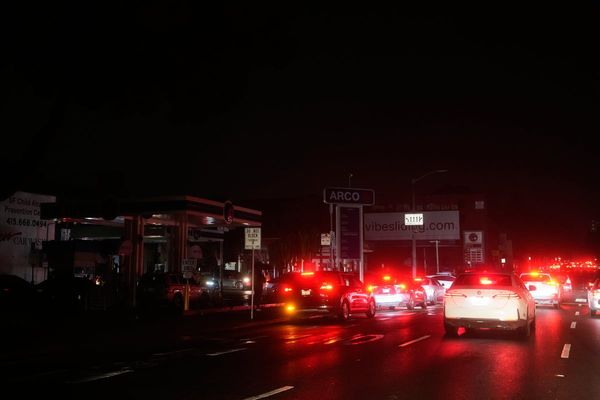
Showers are expected to continue for Sydney and Brisbane throughout much of the coming week but summer isn’t over yet, according to the Bureau of Meteorology.
In fact, the senior meteorologist Miriam Bradbury said showers and storm activity were a regular feature of the Australian summer, especially for northern Australia, as well as south-east Queensland and eastern New South Wales.
This week south-east Queensland and eastern New South Wales were “tipping towards those wetter conditions”, Bradbury said on Thursday.
“Our seven-day forecast for Sydney, for example, does suggest a chance of showers or even a possible storm pretty much every day. That’s thanks to an inland trough, which is holding moisture over the area and not really going anywhere.”
The bureau issued a severe thunderstorm warning for the Redland city council area in south-east Queensland on Friday, after 162mm was recorded at Dunwich airport on Stradbroke Island within the last 24 hours.
“Thunderstorms in the early hours of this morning really ramped up over Stradbroke Island, so we have seen some pretty high rainfall totals there,” Bradbury said on Friday.
Across the rest of south-east Queensland, totals were mostly in the 20-40mm range, she said.
In NSW, rainfall totals in past 24 hours were mostly in the 10-30mm range, with the highest observations near the Queensland border. Crabbes Creek recorded 62.5mm, which Bradbury said was not exceptional for that part of the Northern Rivers region.
Similar areas were likely to be affected by showers and storms on Friday, with the wet weather pushing inland in south-east Queensland including the Darling Downs, Granite Belt, eastern parts of the Maranoa and Warrego, as well as parts of the Central Highlands and Coalfields.
“We could see severe thunderstorms in those areas; that could bring the heavy falls that lead to flash flooding as well as damaging winds and large hail,” Bradbury said.
The risk of heavy falls extended down into parts of NSW, she said, including the North West Slopes, Northern Tablelands, Central Slopes and Central Tablelands.
The bureau’s long-range forecast expects a wetter than average season for large parts of eastern, western and northern Australia, with an increased chance of unusually high rainfall.
But as weather systems moved through over days and weeks, Bradbury expected there would still be periods of warm and dry conditions to come, “like what we had last weekend in Sydney”, she said.
In contrast, the forecast for areas farther south including Melbourne, Hobart, Adelaide and Perth was generally sunny and dry, she said. There was a chance of patchy rain “or a couple of rumbles of thunder” in Melbourne and Hobart at the weekend.
Summer was associated with our most severe weather, Bradbury said. “That does include things like heatwaves and bushfires – that dry, hot weather – but it also includes wet weather, we see the most flooding during summer, we see the most severe storms as well.”
In a warming climate, those extreme events were becoming more frequent, she said.
Sydney, which has received a drenching this week, was one of Australia’s rainiest capitals, and usually experienced more rain from January to June than in the second half of the year. Brisbane’s wettest month on average was yet to come – in February – although January and December also have high average rainfall totals.
Andrew King, an associate professor and climate scientist at the University of Melbourne, said Australia was a big continent and the weather systems that brought rain across southern cities differed from places on the east coast.
“In the south, a lot of our rainfall comes from fronts, like cold fronts, crossing over the southern part of the continent,” he said. “Those typically retreat a bit further south in summer.
“Places like Sydney and Brisbane get more of their rain from storms or from showers that move in from the east, from the ocean. In summer those tend to have a bit more ‘oomph’ to them, and produce a bit heavier rainfall.”
The effect of global heating on rainfall was “a more complicated picture” than temperature, King said. Some areas, such as the south-west, were getting drier, while other areas became wetter, and there was generally more variability, he said.







